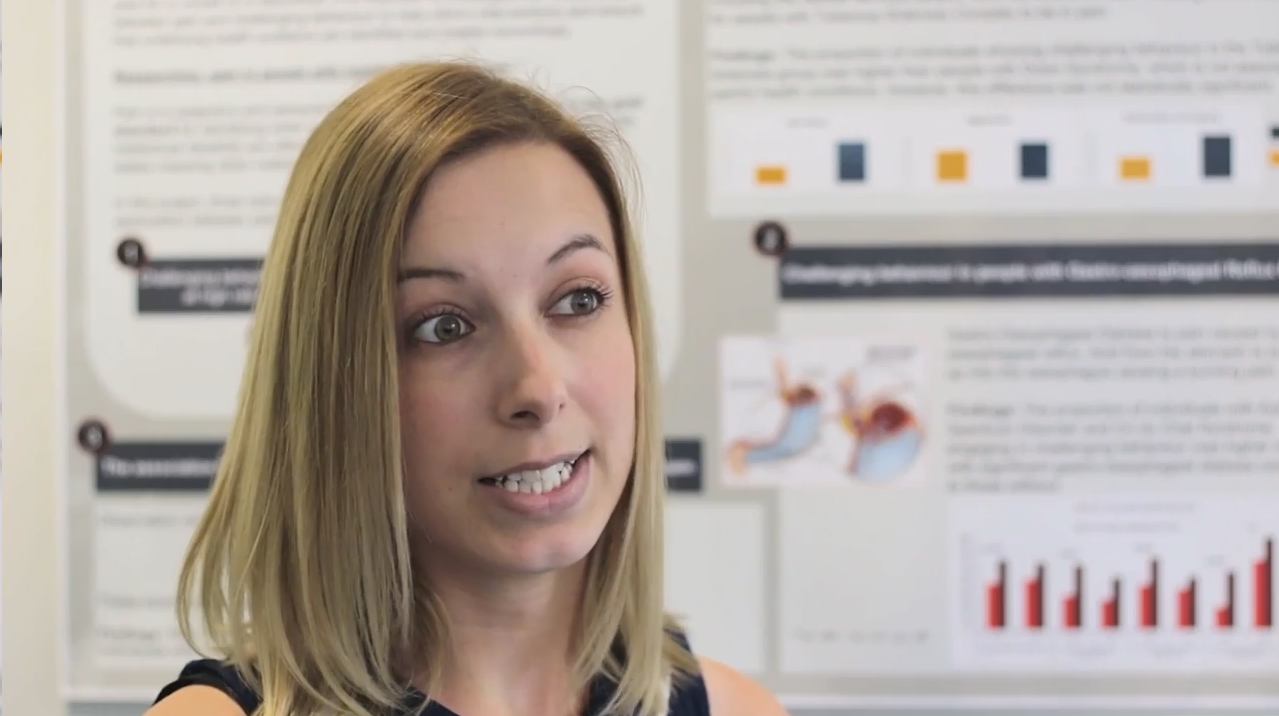Temper Outbursts
Many people with Prader-Willi syndrome experience temper outbursts. Several common triggers to temper outbursts have been identified and include a change to routine or expectation, receiving conflicting information and losing something. The frequency and duration of temper outbursts varies from person to person.
Research carried out by Dr Kate Woodcock and team has shown similarities in the sequence of behaviours and emotions during temper outbursts. Often emotional behaviours, such as crying and emotional vocalisations occur early in an outburst sequence, and are followed by quickly rising anger and more overt behaviours such as aggression. Outbursts are frequently followed by expressions of remorse and the emotional behaviours that indicate distress can also occur towards the end of an outburst sequence.
They carried out a number of studies that have focused specifically on the temper outbursts that individuals can show following changes to their routines or their expectations (plans). It was found that such temper outbursts are linked to experiencing a difficulty with change, which is a broader characteristic of behaviour that is commonly shown by individuals with Prader-Willi syndrome. Many people with Prader-Willi syndrome find it very difficult to deal with changes to routines or plans and – even if they do not show temper outbursts following such changes – often get upset following such changes.
The different types of brain processes in people with Prader-Willi syndrome that were expected to be linked to experiencing a difficulty with change, based on research in other groups of individuals were assessed. It was found that people with Prader-Willi syndrome seem to have a specific deficit in the brain process called “task switching” or “attention switching”.
Task switching is the brain process that allows us to switch from thinking about a set of stimuli or events in one way, to thinking about the same set of stimuli or events in a different way. So, for example, if we have a boiled egg in a shell and we have a teaspoon, we might start by using the teaspoon to crack open the egg and then move on to using it to eat the egg with. In this scenario, we would have to switch between thinking about the teaspoon as an implement heavy enough to crack the egg, and thinking about the spoon as a piece of cutlery that is appropriate to eat the egg with.
Not only do people with Prader-Willi syndrome find switching particularly difficult, but when they engage in switching, the brain functions in a different way compared to people who don’t have Prader-Willi syndrome. A study found that people with Prader-Willi syndrome who have greater difficulties with switching, also show more difficulty with change. In addition, using a computer task to place demands on switching abilities with participants with Prader-Willi syndrome, triggered these individuals to show behaviours – such as arguing, questioning and ignoring requests. This formed part of their characteristic sequence of behaviours which occur during a temper outbursts.
This research showed that two important characteristics, which can come together to cause temper outbursts in people with Prader-Willi syndrome, are a cognitive deficit in switching and a difficulty with change. Following these studies, the researchers tried to use this information to develop intervention approaches that may help families to reduce the difficulties with temper outbursts shown by the people they care for with Prader-Willi syndrome.
They noticed that some individuals with Prader-Willi syndrome showed very little or no upset following changes, unless those changes happened in routines that they had been accustomed to for a very long time. It is known that routines are important for children growing up with Prader-Willi syndrome, particularly around food, to reduce anxiety that might be experienced about not knowing what is going to happen when. If allowing a routine to be established for longer results in people showing greater difficulty when this routine is subsequently changed, this would suggest that we should try to develop ways to help people with Prader-Willi syndrome grow up with the routines that they need with flexibility built in.
In their research, Dr Kate Woodcock and team used games that were completely novel to participants with Prader-Willi syndrome. Participants played these games for different lengths of time so that there were different durations of opportunity for the game’s routines to become established. After the routines had been established, a series of changes were made to those routines. The study found that as participants were exposed to the routines for longer, they showed more temper outburst behaviours and increased emotional arousal following changes to those routines. This therefore highlights the importance of including flexibility in the routines that people with Prader-Willi syndrome are exposed to as this may be an important way to help reduce future difficulties with change. Future research in this area will be very important to inform us about how to do this in the best way.
As it is known that changes to routines can trigger temper outbursts, the research team explored whether increasing the predictability of a change to routine would reduce the number of temper outbursts that follow changes. They developed an intervention strategy that used a picture card and verbal phrase to signal changes to routines whenever caregivers had prior notice that these changes would occur. Parentsl, carers and teachers used the strategy and recorded the number of temper outbursts that participants with Prader-Willi syndrome showed using a diary. Some situations were set up in order to observe participants’ behaviour following changes to routines that were not signalled by caregivers, compared to following changes that were signalled. - These observations suggested that for the particular changes that were observed, using the signal made it easier for people with Prader-Willi syndrome to deal with the change, and led to less temper outburst behaviours. The diaries kept by caregivers showed that for the majority of people who used the strategy, less temper outbursts were shown compared to before the strategy was used.
Download this information below:
Temper outburst in PWS summary




